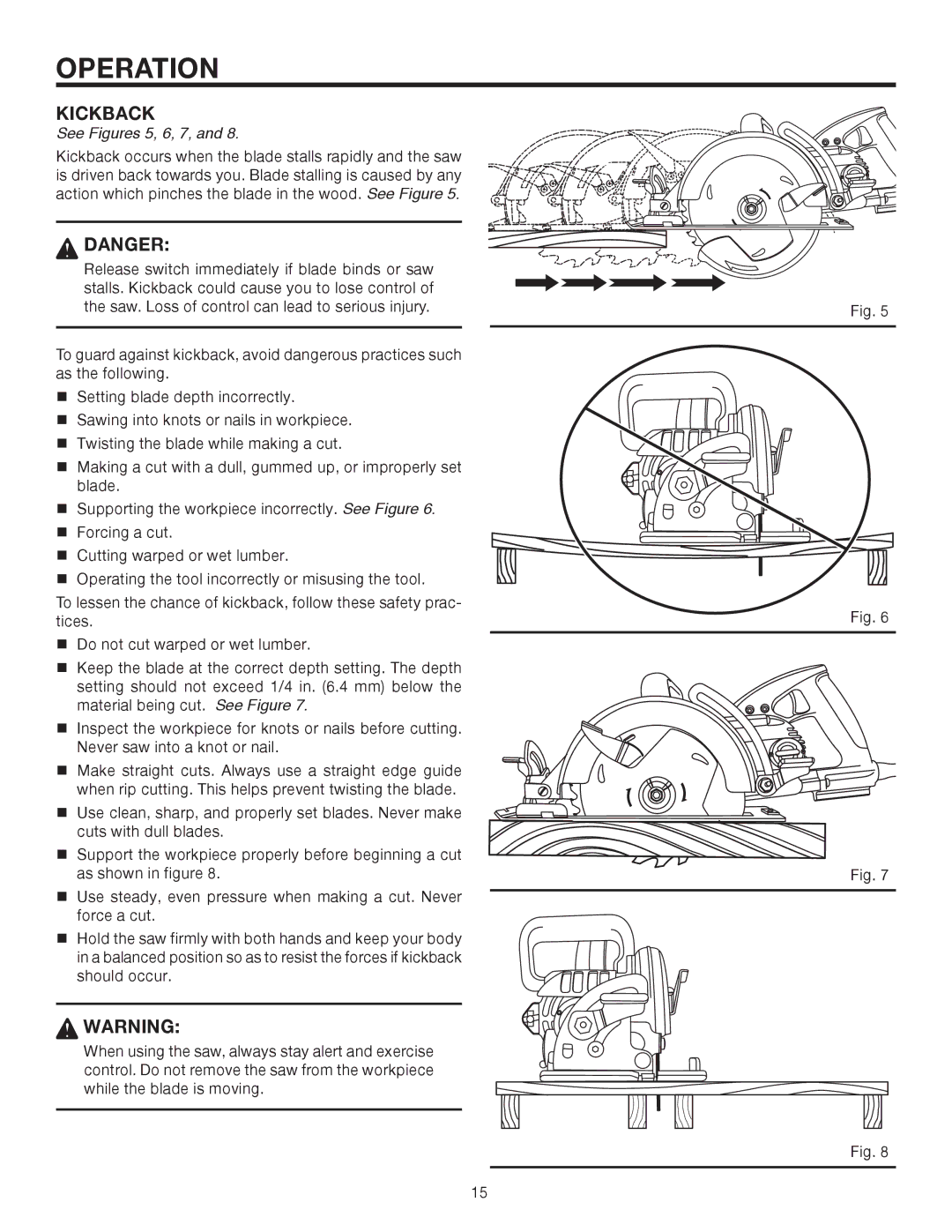
OPERATION
KICKBACK
See Figures 5, 6, 7, and 8.
Kickback occurs when the blade stalls rapidly and the saw is driven back towards you. Blade stalling is caused by any action which pinches the blade in the wood. See Figure 5.
DANGER:
Release switch immediately if blade binds or saw stalls. Kickback could cause you to lose control of the saw. Loss of control can lead to serious injury.
To guard against kickback, avoid dangerous practices such as the following.
nSetting blade depth incorrectly.
nSawing into knots or nails in workpiece.
nTwisting the blade while making a cut.
nMaking a cut with a dull, gummed up, or improperly set blade.
nSupporting the workpiece incorrectly. See Figure 6.
nForcing a cut.
nCutting warped or wet lumber.
nOperating the tool incorrectly or misusing the tool.
To lessen the chance of kickback, follow these safety prac- tices.
nDo not cut warped or wet lumber.
nKeep the blade at the correct depth setting. The depth setting should not exceed 1/4 in. (6.4 mm) below the material being cut. See Figure 7.
nInspect the workpiece for knots or nails before cutting. Never saw into a knot or nail.
nMake straight cuts. Always use a straight edge guide when rip cutting. This helps prevent twisting the blade.
nUse clean, sharp, and properly set blades. Never make cuts with dull blades.
nSupport the workpiece properly before beginning a cut as shown in figure 8.
nUse steady, even pressure when making a cut. Never force a cut.
nHold the saw firmly with both hands and keep your body in a balanced position so as to resist the forces if kickback should occur.
![]() WARNING:
WARNING:
When using the saw, always stay alert and exercise control. Do not remove the saw from the workpiece while the blade is moving.
Fig. 5
Fig. 6
Fig. 7
Fig. 8
15
